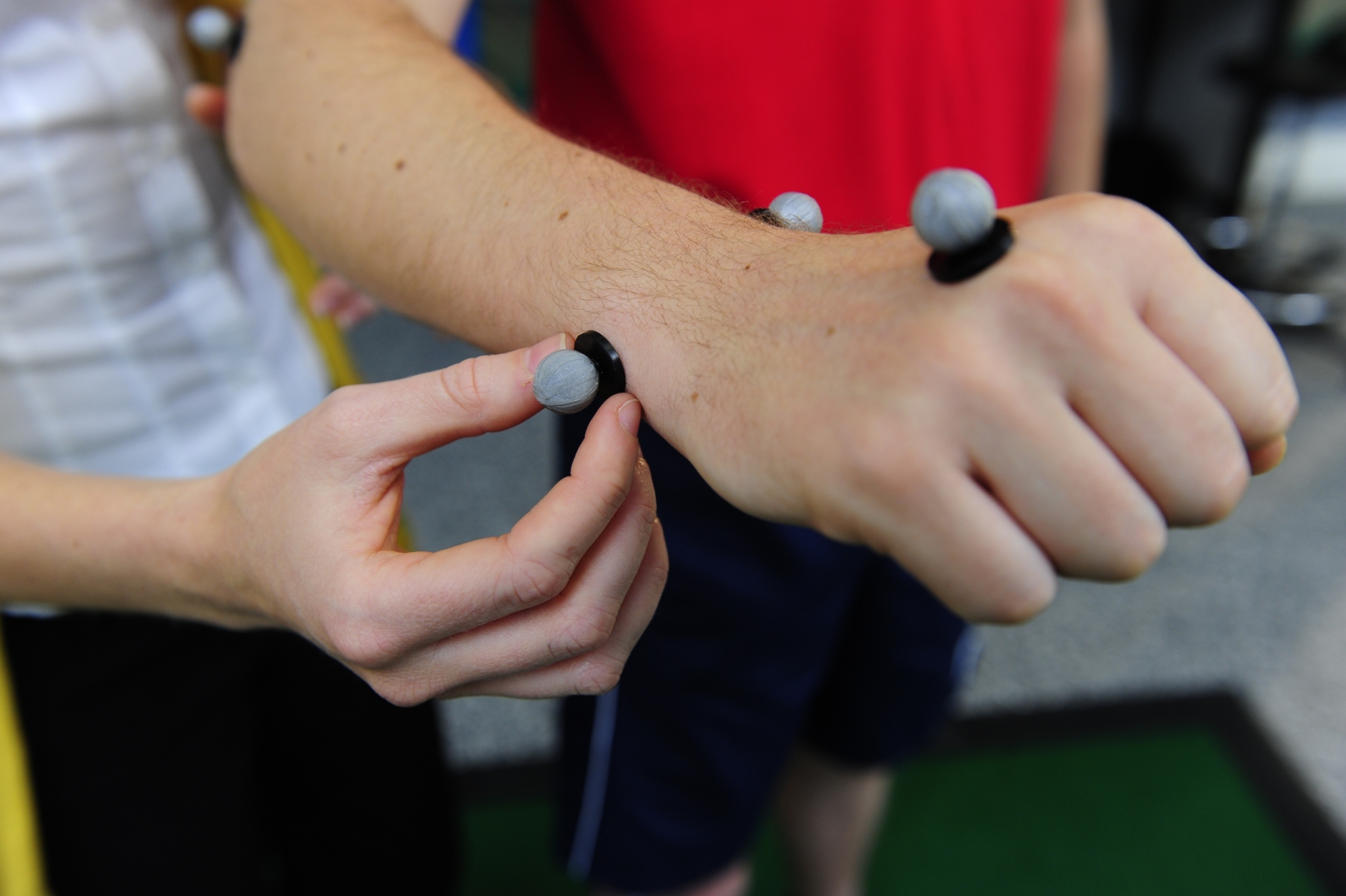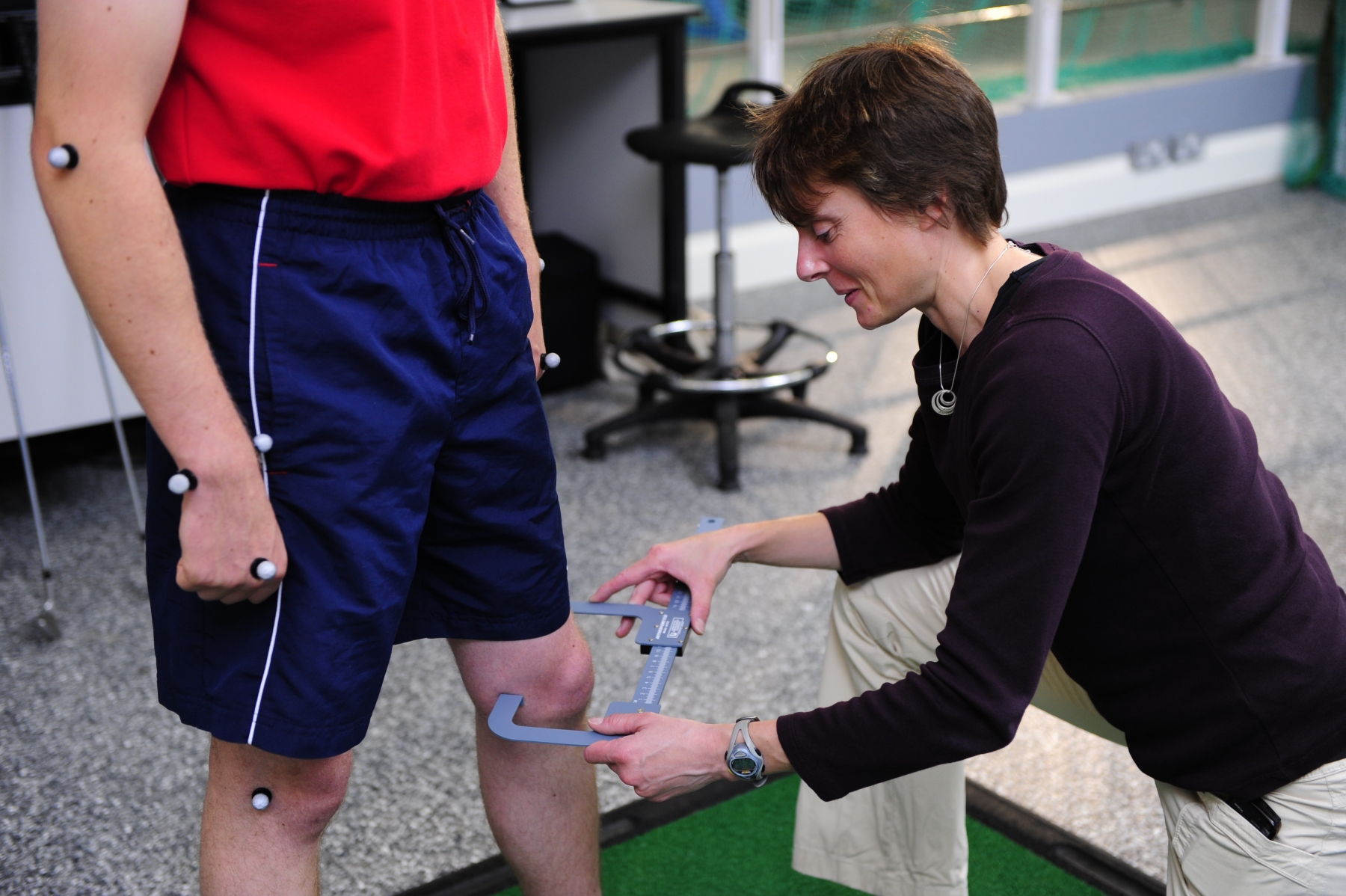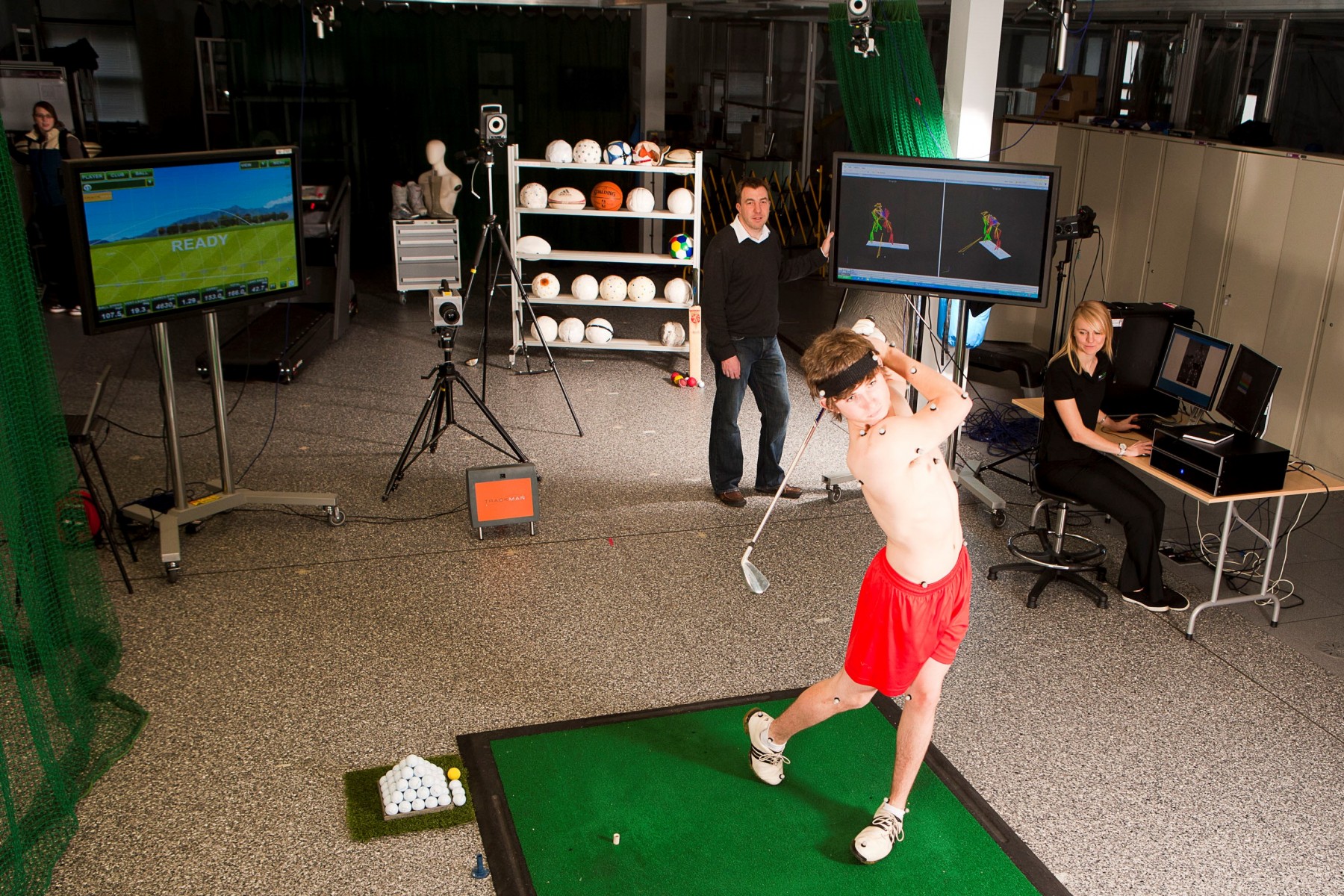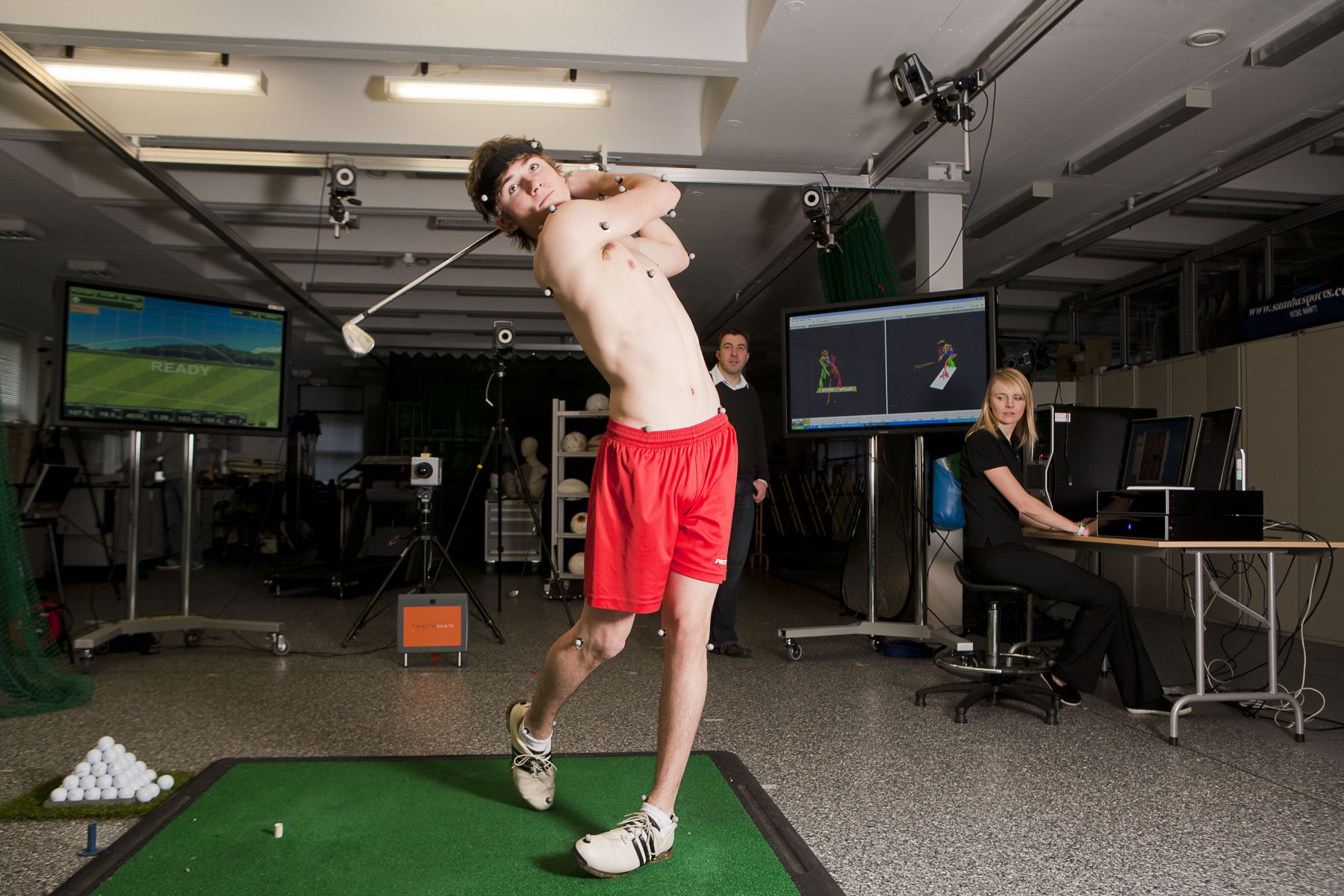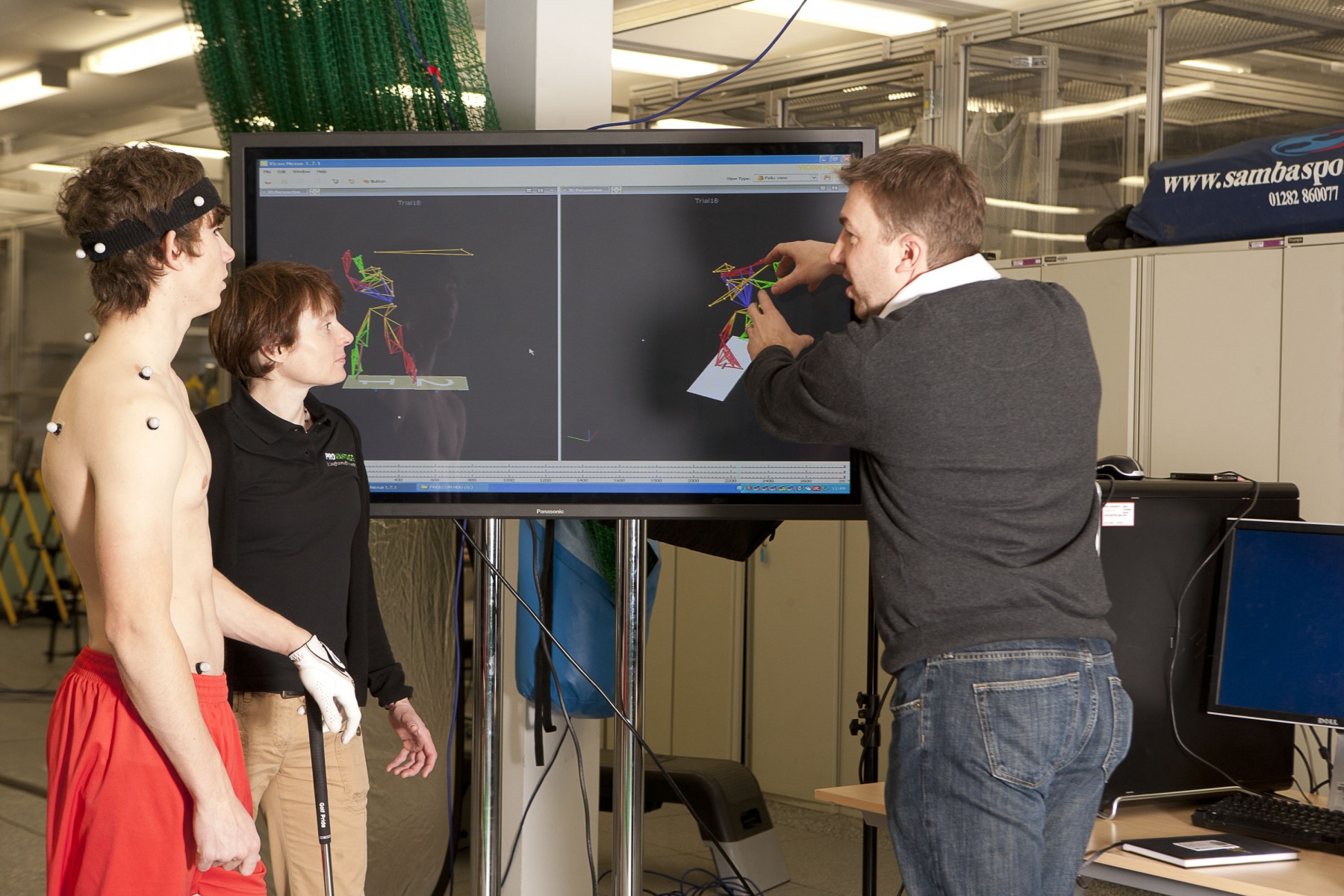The golf swing is one of the most difficult movements in sport to perform and understanding swing mechanics is crucial for equipment development and performance analysis. Recent technological advances in motion capture, electromyography and force / pressure measurement offer considerable opportunities if used intelligently. Appropriate methodologies, however, are still not fully developed and the systems generate a wealth of data that is not easy to interpret. Research in this area has, therefore, focused on methodological considerations to generate high quality data and advanced statistical techniques to identify subtle differences in movement patterns. These techniques can now be used to study golfer-product interactions and provide a scientific assessment of a golfer’s technique. The knowledge gained from this work directly informs a support service for elite golfers called ProVantage.
Aims
The following aims have been considered over a number of different studies into golfer biomechanics:
- to identify the key technical parameters that high-level golf coaches associate with a successful golf swing
- to develop suitable data collection techniques for assessing golfer biomechanics
- to determine the most suitable marker protocol and segment definition to obtain meaningful 3D wrist kinematics
- to evaluate suitable statistical techniques for analysing continuous time series data, identifying subtle differences in movement patterns and visualising relationships with shot outcomes
- to compare trunk kinematics and x-factor calculated using 2D and 3D methods
- to compare centre of gravity (COG) and centre of pressure (COP) patterns in the golf swing
- to identify biomechanical differences that exist when a golfer plays different types of shot trajectory with the same club
Approach
- A combination of interviews and qualitative analysis techniques used to determine golf coaches’ perceptions of the key technical parameters of a golf swing
- A 17 segment, 6DOF biomechanical model of a golfer developed based on the motion of 63 strategically placed markers on the golfer
- A range of different segment definitions for the hips and trunk evaluated including the use of functional joint centres
- Trunk kinematics and x-factor compared using 2D and 3D angle definitions
- Principle Component Analysis (PCA) evaluated for identifying differences in continuous time series data
- A combination of PCA, fuzzy coding and multiple correspondence analysis (MCA) used to visualise associations within key biomechanics movement patterns and clubhead–ball impact parameters
Key Findings
- Five intrinsically linked key technical parameters were identified from interviews with elite golf coaches: ‘Posture’, Body Rotation’, ‘Arm and Wrist Action’, ‘Sequential Movement and Body Segments’ and ‘Club Motion’
- Use of a two segment model is more appropriate for analysing the trunk during the golf swing
- Principle Component Analysis (PCA) was able to extract subtle differences in both kinetic and kinematic data for different swings. Interpreting biomechanical meaning from PCA results remains challenging but the major differences found between data sets could usually be characterised as a change in offset, range of motion, timing and/or velocity.
- Statistically significant differences in X-factor (approximately 16º), trunk flexion at top of backswing (-6.5 ± 3.6º) and trunk right-side lateral bend at impact (8.7 ± 2.9º) were found between 2D and 3D methods. The results support the need to use a 3D method for kinematic data calculation in order to accurately analyse the golf swing
- The COP and COG PC1 scores were strongly correlated in both medial–lateral (ML) and anterior–posterior (AP) directions. Clubhead velocity was related to timing and rate of change in COPML near downswing and timing of COGML late backswing. Golfers with earlier movement of COP to the front foot and rate of change patterns in ML COP, prior to the downswing, may be more likely to generate higher clubhead velocity.
- PCA revealed subtle changes in swing biomechanics such as between fades, draws and low trajectory shots. Clusters of golfers that employ different biomechnical approaches were identified using the PCA results.
- MCA can be used to simply and quickly identify movement patterns of a group of similar handicap golfers if supported with appropriate descriptive interpretation of the data. This technique also has the potential to highlight mismatched golfer biomechanics variables which could be contributing to weaker impact parameters.
Publications
- Turner, J., Forrester, S.E., Mears, A.C., Roberts, J.R. (2020). The influence of tracking marker locations on three-dimensional wrist kinematics. Journal of Science and Medicine in Sport, 23(10), pp. 985 – 990.
- Mears, A., Roberts, J.R., Forrester, S.E. (2018). Matching golfers’ movement patterns during a golf swing, Applied Sciences, 8(12).
- Smith, A.C., Roberts, J.R., Kong, P.W., Forrester, S.E. (2016) Comparison of centre of gravity and centre of pressure patterns in the golf swing, European Journal of Sport Science, pp.1-11.
- Smith, A.C., Roberts, J.R., Wallace, E.S., Kong, P.W., Forrester, S.E. (2016) Comparison of two- and three-dimensional methods for analysis of trunk kinematic variables in the golf swing, Journal of Applied Biomechanics, 32(1), pp.23-31.
- Smith A.C., Roberts J.R., Wallace E.S., Kong P.W., Forrester S.E. (2015) Golf coaches’ perceptions of key technical swing parameters compared to biomechanical literature. International Journal of Sports Science & Coaching 10(4):739-755.
PhD Researchers

Dr Aimee Mears (nee Smith)
Smith, A.C. (2013). Coach informed biomechanical analysis of the golf swing. PhD Thesis.


